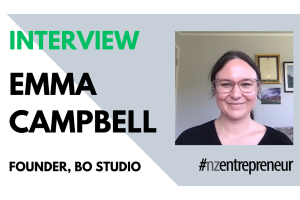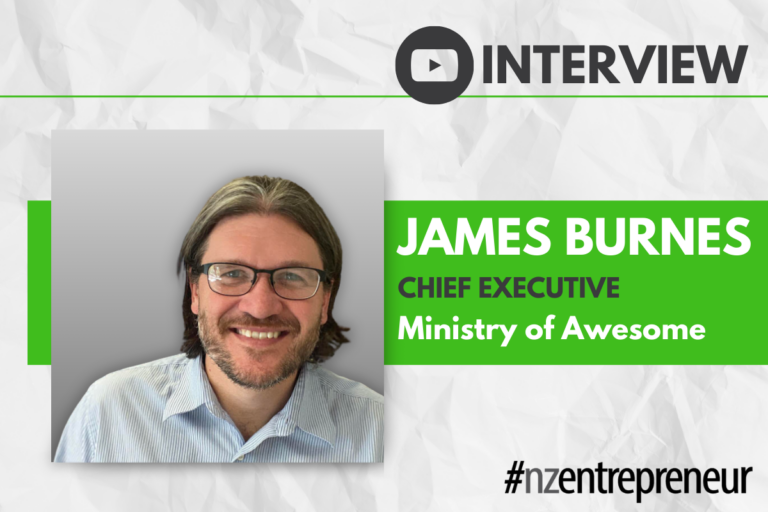
Kiwi inventory forecasting software StockTrim achieved international sales in the UK, Australia and US immediately after launching in 2017. It’s been growth ever since, and in 2020 the company pitched for funding to scale up.
StockTrim came out successful – oversubscribed, in fact. The fund raise required three in-person pitches, seven Zoom pitches and 30 Zoom calls before closing successfully in August.
Now, cofounders Paul Simpson and Dominic Sutton are sharing what they learned during the ups and downs of the journey.
Lesson 1
You may have to give up to 100 presentations – so condense your message.
In early 2020, Sutton set up meetings through cold and warm outreach over email, LinkedIn, and networking through angel and tech start-up groups.
Sutton was told by a venture capitalist that raising capital can be a full-time job for months, “So be prepared to make 40 to 100 presentations.”
The pitch:
- StockTrim is a SaaS API which uses a machine learning algorithm to look at past stock behaviour and project future demand to avoid the common situations of over-ordering, under-ordering or miscalculating delivery times and quantities.
- StockTrim is cloud-based and deliverable anywhere worldwide.
- It’s innovative, combining new tech with a growing appetite for subscription automation in SMEs.
Lesson 2
Learn how to respond if your audience doesn’t understand your business concept.
When you’re pitching to investors, be prepared to have people at the table who ask so many questions that they don’t fully listen.
“When they use their own misunderstanding to justify a reason to not invest it was initially very exasperating.”
“Everyone wanted me to have a shorter presentation deck then thought we were hiding something when I couldn’t include it in the deck. There is only so much you can get in a ten slide, five minute presentation! Be prepared to speak to a scenario but don’t feel bad if it’s not in your presentation. I found 20 different opinions on what should be in our deck and none of them were either right or wrong.”
Lesson 3
Successful pitches help your confidence snowball.
Ice Angels chair Michael Murphy liked what StockTrim were doing and was happy to become chair of StockTrim’s board of directors and become one of the first investors. “He got us in front of the Ice Angels and a number of them invested,” Sutton says. “I was then able to say to the rest of the angel groups that the others invested.”
The snowball effect meant one person’s confidence inspired the next which Sutton says reduced the due diligence workload for him.
He found many private investors were interested in him as much as StockTrim. “It was more of an ‘I believe in you because I’ve seen you in action’ scenario. That’s where the founder thing comes in, whereas the Angels are more focused on growth projections and risk.”
Lesson 4
Tell stories, but back up the narrative with numbers.
Sutton learned midway through his pitching journey that what most impressed investors was telling the story of Mega Distribution, a California health supplies wholesaler which became an early adopter and rapt fan.
The lesson: a compelling story sticks in a decision-maker’s mind.
“These investors are going to go home and their spouse will ask ‘What did you see?’ They’re not going to remember all the statistics: what they will remember is a real story about a customer solving a problem.”
“That’s when I started getting more traction. After hearing the Mega Distribution story, people came up and said, ‘That’s exactly what happened in my business.’ They understood the value of that kind of problem solving, because so many investors are also business owners.”
One of the few numbers you’ll need specify is how much money you require and where it will be spent.
Printed or digital brochures and reports are more helpful after the pitch, not so much during. “Boil the concept down into the smallest number of slides to generate a Tell Me More scenario,” Sutton says.
“Prove what the pain point is and how your product can solve it.”
Lesson 5
A live demo of the product is essential.
The story of StockTrim’s inventory solutions left an impression on investor Ivor Peska, who was able to try out StockTrim with a few clicks.
Peska at the time was ordering weather stations to retail – products which have long lead times and minimum order quantities. Peska saw the StockTrim presentation as a great opportunity to compare and contrast his existing spreadsheet versus StockTrim.
Comparing the MOQs of his product SKUs “saved me running out of stock at Christmas,” Peska told Sutton. “This is a fabulous validation of the concept.”
Peska happily invested and StockTrim successfully closed its seed funding round in August 2020 with a total of three group and three individual investments.
Lesson 6
Be prepared for the inevitable feedback. “It normally comes from a good and decent place,” Sutton says. “If you sway in the wind of public opinion of your product you will lose your focus and become despondent. But don’t be a stubborn fool either with your eyes and ears shut.”
Lesson 7
Research the group and the individuals before you approach them, then tailor your to pitch to them. Find out beforehand if the people you’re pitching to are able to invest at the level you require – whether high or low – as some are only able to invest in businesses with certain revenue returns, Sutton says. “Some guys just won’t write small cheques.”
Lesson 8
A company is more than the CEO / founder, so tell your angel investors who’s in your team.
Lesson 9
Understand your product’s target market deeply, and prove it.
Lesson 10
Some investors may want a completely unique concept or idea, but they need to understand most ideas are not wholly original, and wholly original ideas are not the most rewarding due to matters of scale and adoption.








